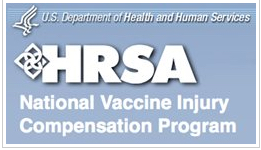
CDC Upset About Low HPV Vaccine Uptake
During NVAC and ACIP committee meetings held in 2013, CDC officials complained about missed opportunities1 and lack luster uptake of the HPV vaccine across the nation.2 In 2008, the NVAC supported HPV vaccine mandates that included doctors being allowed to give adolescents HPV vaccinations without the knowledge or consent of their parents. The current NVAC HPV Working Group continues to support this policy.
Both the NVAC and ACIP want increased use of the HPV vaccine by children (boys as well as girls) with NVAC’s HPV working group3 being charged with assisting the government in creating strategies to increase uptake of Merck’s Gardasil and GSK’s Cervarix vaccines. Recommendations from the working group included reframing the vaccine from an STD prevention vaccine to an “anti-cancer” vaccine in a new national media campaign.
The advertising campaign will attempt to brand HPV vaccine as a public health concern in an effort to end parental opposition to this vaccine. In addition, the CDC and medical trade groups will continue to urge pediatricians to offer HPV shots to all pre-adolescents and teenagers at the same time doctors give other government-recommended vaccines to them. They are also heavily promoting alternative settings for giving vaccines, such as schools and pharmacies.
HPV-associated cervical cancer is estimated to affect between 11,000 and 13,000 women annually in the U.S. with about 4,000 dying from cervical cancer, usually after many years of undetected and untreated chronic HPV infection. HPV is naturally cleared from the body within two years by more than 90 percent of those who become infected. Routine pap screening for women and early interventions to prevent cervical cancer has reduced cervical cancers in the U.S. by over 70 percent since the 1960’s.4
The CDC’s report to Congress in 2004,5 clearly stated that the majority of HPV infections “cause no clinical problems and go away on their own without treatment”. This same report touted the effectiveness of pap screening in decreasing the incidence and mortality of cervical cancer, while contributing to a 90 percent cervical cancer survival rate. The HPV vaccine three-shot series currently costs a minimum of $390,6 while a pap test can cost as little as $33.
This most recent repackaging and aggressive advertising of HPV vaccine by federal health officials raises the question: Is this a wise use of tax dollars in a health care system struggling to stay solvent?
Adults in the Crosshairs To Become Vaccine Compliant
Federal agency efforts to target adults and persuade them to toe the government vaccine policy line are underway. The take away from discussions by federal officials and committee members is that adults are non-compliant with government vaccine recommendations and fall far behind the aspirational federal Healthy People 20207 goals set for adult vaccine use. NVAC issued its recommendations8 in 2011 on strategies to increase adult vaccination and this topic is receiving more attention during committee meetings with yet another media and marketing/communications effort9 underway to target adults.
Current NVAC recommendations look to school entry mandates as a possible model to increase adult vaccine use in partnership with medical trade and other non-government organizations (NGO’s). Should these recommendations pick up steam, they could result in employer-based mandates similar to those already being put into place for health care workers in hospitals and other medical facilities. Already, many workers in health care fields are being forced to receive annual flu shots and other government recommended vaccines as a condition of employment in compliance with Healthy People 2020 goals.
Vaccines for Pregnant Women: What About Injury Compensation?
During recent ACCV meetings, questions about the federal Vaccine Injury Compensation Program (VICP) have focused on vaccination recommendations for pregnant women. The CDC already recommends influenza and Tdap vaccinations for pregnant women, which have FDA category B or C designations, and there are new vaccines for respiratory syncytial virus (RSV) and Group B Streptococcus being developed for pregnant women.
Current and anticipated future vaccine use policies for pregnant women have turned up the heat on the ACCV to make recommendations about how vaccine injuries sustained during pregnancy will be compensated under the National Childhood Vaccine Injury Act of 1986. At a June ACCV meeting, members approved recommendations made by the ACCV Maternal Working Group that are being sent on to Secretary Sebelius for consideration to address vaccine injuries that occur during pregnancy.
- Expansion of the VICP to include vaccines that are routinely recommended pregnant women and not children;
- Compensation of live born children sustaining a vaccine injury from a vaccine received while in utero;
- Consideration of what legal steps to are necessary to accomplish the above, which include supporting a statutory amendment, administrative rulemaking or litigation strategy;
New Bird Flu Vaccine Being Developed
The CDC updated the ACIP and NVAC10 regarding the H7N9 outbreak in China and reported that, as of June 20, the majority of the 132 lab confirmed cases were in older men with underlying health conditions. The U.S. continues its ongoing surveillance of U.S. birds and testing of suspect human cases. The CDC reports that the H7N9 bird flu outbreak is currently limited to China,11 with all U.S. test case results returned as negative.12
Investigation by Chinese health officials of the outbreak has revealed that there is no evidence to support sustained human-to-human transmission of the H7N9 bird virus.13 Individuals at highest risk for infection are likely to be those in frequent contact with chickens, ducks and pigeons, such as working in the live bird farming industry.
Despite evidence that H7N9 bird flu virus is not easily transmitted to humans, vaccines are being developed14 and evaluated for stockpiling to prepare for a potential future pandemic.
FDA Committee Selects Influenza Strains for 2013/2014 Flu Shots
On Feb. 27, 2013, the FDA’s Vaccines & Related Biological Products Advisory Committee (VRBPAC) met to select influenza strains to be included in the 2013/2014 flu shot. Vicky Debold, PhD, RN, who is NVIC’s volunteer Director of Research & Patient Safety, served as the consumer member on VRBPAC between 2008 and 2012 and was appointed a temporary voting member for this meeting.
During committee discussions, Dr. Debold expressed concern about lack of enough information about the safety of new quadrivalent flu vaccines that will be produced using dog kidney cells (Flucelvax) and army worm cells (Flublok) for the first time. She pointed out that there is a: “need for information that helps us to understand which strains are most likely to be effective to have a successful vaccine, We need more information about predictive validity. This I think is even more salient this year than in any other year I’ve ever seen because we’re playing around now with trivalent and quadrivalent vaccines, we’re playing around with the different doses of antigen, we’re playing around with different platforms. We’ve got eggs, dog kidney cells, baculovirus army worm cells. There are a number of variables that are going on. Some of these vaccines can be given to some age groups but not others. I guess my question is, at the end of the day, how are we going to know that the vaccines that are out there next year are safe and effective, which vaccines are going to be effective and how are we going to collect and use this information to inform our decisions next year?”15
The new 2013/2014 influenza vaccine manufacturer product inserts are available to the public and links are on our Influenza webpage.
Stay Informed by Plugging Into NVIC
According to reports made to the ACCV, adult vaccine injury claims now outnumber vaccine injury claims involving children. Adults must be watchful and ready to defend their informed consent rights because vaccine mandates are not going to be just for children in the future.
NVIC Advocacy Portal - Sign up for NVIC’s advocacy portal to receive alerts about state legislation that proposes to add new child or adult vaccine mandates or take away legal vaccine exemptions for medical reasons or personal beliefs. As an NVIC Advocacy Portal user, you will be connected to your own state legislators via your smartphone or tablet so you can easily communicate directly with them.
Educate Family & Friends - Please forward this newsletter and alerts published by NVIC to your friends and family. Encourage them to sign up for the NVIC Newsletter and take action to protect their informed consent rights.
Become an NVIC Facebook Fan - NVIC hosts a daily online conversation about vaccination and health on Facebook. Join the more than 56,000 NVIC Facebook fans to discover new information on vaccines today!
References:
1 Neale, Todd. "HPV Vaccine Uptake Lagging." 25 Jul. 2013. Medpage Today. Accessed 5 Aug. 2013.
2 Markowitz, Lauri. HPV Vaccination Program & Impact Monitoring. ACIP Meeting 19 Jun. 2013. Accessed 5 Aug. 2013.
3 NVAC HPV Working Group. February NVAC HPV Session Review. NVAC Meeting 11 Jun. 2013. Accessed 5 Aug. 2013.
4 NVIC.org. Human Papillomavirus (HPV) and HPV Vaccine.
5 Centers for Disease Control (CDC). Report to Congress: Prevention of Genital Human Paillomavirus Infection. Jan. 2004. Accessed 5 Aug. 2013.
6 Centers for Disease Control (CDC). HPV Vaccine Information for Young Women - Fact Sheet. Last Updated 18 Jul. 2012. Accessed 5 Aug. 2013.
7 U.S. Dept. of Health & Human Services (HHS). 2020 Topics & Objectives - Immunization & Infectious Diseases. Last Updated 2013 Jul. 2013. Accessed 2013 Aug. 2013.
8 National Vaccine Advisory Committee (NVAC). A Pathway to Leadership for Adult Immunization: Recommendations of the National Vaccine Advisory Committee. 14 Jun. 2011. Accessed 5 Aug. 2013.
9 Sheedy, Kristine. Adult Immunization: The Consumer Perspective & CDC Communication Efforts. ACIP Meeting 21 Feb. 2013. Accessed 5 Aug. 2013
10Jernigan, Daniel. CDC NCIRD Influenza A H7N9 Update. ACIP Meeting 20 Jun. 2013. 5 Aug. 2013.
11 Centers for Disease Control (CDC). Avian Influenza A (H7N9) Virus. Last Updated 2013 Jul. Accessed 5 Aug. 2013.
12 Ibid. 10
13 Ibid. 10
14 Robinson, Robin. HHS H7N9 Vaccine Response. NVAC Meeting 2013 Jun. 2013. Accessed 5 Aug. 2013.
15 FDA. Transcript of Meeting of Vaccines & Related Biological Products Advisory Committee. 27 Feb. 2013. Accessed 5 Aug. 2013.





.png?width=991&height=280&ext=.png)


Leave a comment
Your email address will not be published. Required fields are marked with an *